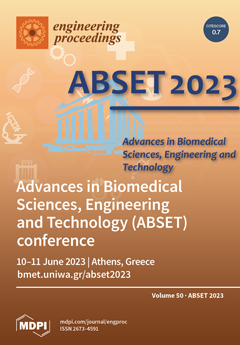Open AccessProceeding Paper
Unraveling Imaginary and Real Motion: A Correlation Indices Study in BCI Data
by
Stavros T. Miloulis, Ioannis Zorzos, Ioannis Kakkos, Aikaterini Karampasi, Errikos C. Ventouras, Ioannis Kalatzis, Charalampos Papageorgiou, Panteleimon Asvestas and George K. Matsopoulos
Viewed by 583
Abstract
The efficient translation of brain signals into an output device is an essential characteristic to establish a Brain-computer Interface (BCI) link. This research investigates the applicability of diverse correlation indices for the differentiation of specific movements (left, right, both, or none) and states
[...] Read more.
The efficient translation of brain signals into an output device is an essential characteristic to establish a Brain-computer Interface (BCI) link. This research investigates the applicability of diverse correlation indices for the differentiation of specific movements (left, right, both, or none) and states (real or imaginary) in a private BCI dataset, including EEG recordings of 32 participants. As such, the recorded brain activation data were employed to illustrate the differences between visual- and auditory-event-related responses during task performance. Our methodology involved a two-pronged approach. Firstly, EEG data were collected, capturing both the visual- and auditory-event-related signals that corresponded to each of the four movement classes. Secondly, we performed a comparative analysis of the collected dataset using various correlation algorithms, such as Pearson, Spearman, and Kendall, among others, to evaluate their effectiveness in differentiating between movements and states. The results demonstrated distinctive correlation patterns, as the selected indices effectively distinguished between real and imaginary movements, as well as between different lower limp movements in most cases. Moreover, the correlation schemas of certain individuals presented greater sensitivity in discerning nuances within the dataset. In this regard, it can be inferred that the chosen correlation indices can provide valuable insights into the aforementioned differentiation in EEG data. The results open up potential paths for improving BCI interfaces and contributing to more accurate prediction models.
Full article
►▼
Show Figures




